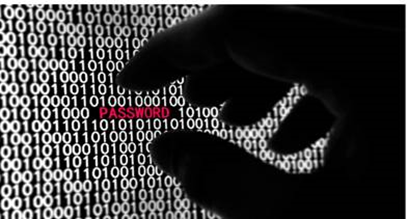AARP Hearing Center

As data breach incidents proliferate, a new AARP survey finds that an alarming number of people have failed to take the basic precautions against identity fraud. In response, the AARP Fraud Watch Network has launched a campaign to raise awareness of identity theft risks and educate consumers on how to enhance the safety of their personal information.
Reports of data breaches have become commonplace -- from Equifax one year ago, to Target, to Uber, to Home Depot. According to the Privacy Rights Clearinghouse there have been more than 2,000 data breaches since 2015, impacting over 7 billion records. And an eye-opening cover story in the September edition of the AARP Bulletin explains how some of this hacked personal information can end up for sale on the Dark Web.
While some security experts say almost all consumers have likely been affected in some manner by a data breach, AARP’s survey shows that many put themselves in even higher jeopardy due to their risky online behavior:
- Password Re-use - Nearly half (48 percent) of adults have used the same password for more than one online account.
- Bank Account Access - Only four in 10 (43 percent) respondents reported having online access to all of their bank accounts.
- Credit Report - About half of adults (47 percent) reported that they have experienced fraudulent charges on their credit or debit card, yet very few (14 percent) have ordered a security freeze on their credit report.
- Digital ID Know-How - Seven of 10 adults (73 percent) failed a quiz testing their “digital identity IQ”.
“Our survey results indicate that a lot of people may feel overwhelmed, and have just given up,” said AARP’s lead fraud researcher, Douglas Shadel, Ph.D. “Two-thirds of those surveyed said that given the number of data breaches that have occurred, they think it is inevitable that criminals will be able to exploit their credit at some point. But we are emphasizing that there are powerful things you can do to make sure that stolen data can’t be used against you.”
The AARP Fraud Watch Network campaign recommends people take these three steps to protect their digital identity:
- Order a Freeze - Put a security freeze in place with the three credit reporting bureaus so that no one can access your credit file or open a new credit account with your information. For a guide to the process, visit www.aarp.org/CreditFreeze. Traditionally there has been a fee for placing a freeze on your credit report, but beginning later this month the process is free thanks to legislation passed by Congress in May.
- Set up Digital Access - Set up online access to all of your financial accounts – bank accounts, credit cards, 401(k)s, etc. -- and regularly monitor the accounts so you can stay up-to-date on all transactions and recognize any fraudulent activity that may occur.
- Use Separate Passwords - Make sure you use unique passwords for each of your online accounts. That way, if one account is hacked, it does not put your other accounts at risk. A good way to manage all of those unique passwords is to use a digital password manager. These services keep all your passwords secure and help you create different, strong passwords for each of your online accounts.
AARP’s digital identity theft education and awareness campaign consists of online advertising, social media content, online video, recommended tips for protecting yourself, and other assets that consumers can access at www.aarp.org/FraudWatchNetwork.
AARP’s Digital Identity IQ Quiz, consisting of eight true-or-false questions, is also available online. Among the quiz results from AARP’s recent polling:
- Only one-third of respondents (29 percent) were aware that a fraud alert will not prevent their credit file from being shared with potential creditors. A fraud alert does not block potential new credit, but places a comment on your history so that creditors will contact you prior to opening a new account.
- Just half of respondents (49 percent) know that purchasing ID theft monitoring services does not prevent identity thieves from stealing your identity. Most ID theft monitoring services will notify individuals if someone is attempting to open new credit in their name, however it won’t prevent it from happening.
- Only about half (48 percent) of respondents know that when it comes to protecting yourself from fraud, a debit card is not as safe as a credit card. Consumers are responsible for no more than $50 of fraudulent charges on a credit card; however, if money is stolen from a bank account through a debit card, there are no protections on that money.
The AARP Fraud Watch Network launched in 2013 as a free resource for people of all ages. Consumers may sign up for “Watchdog Alert” emails that deliver information about scams, or call a free helpline at 877-908-3360 to speak with volunteers trained in fraud counseling. The Fraud Watch Network website provides information about fraud and scams, prevention tips from experts, an interactive scam-tracking map, fun educational quizzes, and video presentations featuring Fraud Watch Network Ambassador Frank Abagnale.
Abagnale, the renowned fraud expert whose personal story was depicted in the hit movie “Catch Me If You Can,” is also host of an AARP weekly podcast series, “ The Perfect Scam,” that launched earlier this year.































































